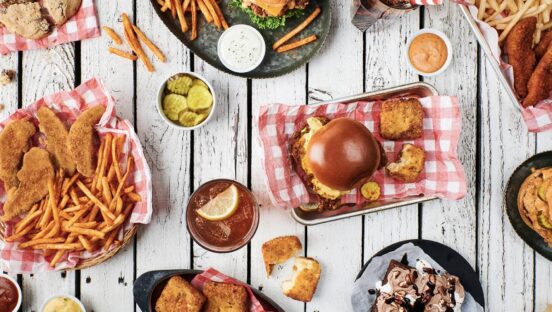For restaurants, delivery data trends are clear—customers will continue to rely on off-premises dining as a significant part of their restaurant spending.
But for restaurants trying to make sense of all the disparate DSP delivery data available, it is a much murkier story. Accessing streams of reports from multiple delivery platforms is a daunting proposition. Creating a clean and unified view of all that data that can drive insights and decisions can be even more challenging. Doing it all in a timely manner so that the data is fresh and actionable, is often overwhelming for busy restaurant operators.
While aggregating DSP order data to create consolidated views of the revenue, operational metrics, customer and driver feedback, and marketing reports is a big one-time investment, the returns promise to be even greater. Stakeholders will have access to insightful dashboards to instantly assess business performance and make smart management decisions. There is no longer a need to log-into multiple interfaces, or attempt to compare measures across disparate platforms. Instead, in real-time, they can review a consolidated and standardized picture of performance that shows clearly what signals they need to pay attention to, down to a location level.
Having done the hard work of creating this unified view, we have found that it’s important to not overlook the sometimes more difficult task of making sure it is used. To help team members understand the value, we’ve developed five questions that should guide their review of the DSP delivery data. Armed with answers to these questions, users of DSP data dashboards can create a clear set of actions to inform their work to grow revenue.
What location benchmarks should we use?
Top performing restaurants’ performance can help us understand what benchmarks to provide to the group overall. While we know DSPs have order and operational goals that they provide, they are not brand (or virtual brand) specific, so the top performers for any business offer a clear snapshot of what revenue and operational criteria should be considered gold standard for a specific restaurant group.
What hours are key to business success?
Understanding what are the peak times and days for revenue is straightforward, but DSP data also allows for a view of errors, cancellations and even ratings at the same granularity. When spikes in errors or cancellations occur, those dynamics can be explored further and then addressed by providing feedback to the appropriate shift managers. Working together, remediation efforts can be designed based on the unique dynamics in the kitchen during that time.
What locations are headed in the wrong direction?
By using a rack and stack report, locations are benchmarked on specific metrics, from orders to cancellations to downtime, and their movement over time is measured. Sorting these reports to look at locations that have the lowest scores and/or steepest decline in rank provides a clear list of restaurants for managers to focus their time on. Improvements on those metrics can also be clearly tracked and highlighted in a single view.
What do customers want us to know?
Up until this point, the data that’s reviewed is all quantitative, but of course DSPs also offer qualitative data that can be organized into clear reports. UberEats satisfaction scores and tags offer a wealth of information. By sorting menu items by overall satisfaction, and then reviewing the tags on each item, customers provide clear guidance on what items need to be improved and whether focusing on food preparation, packaging, or pricing will make a difference. Sometimes this data is location specific and other times it can inform broader menu innovation. Customer reviews can also be processed using machine learning to easily highlight topics or themes that emerge.
What alerts can help us avoid issues next time?
Because the data is compiled in real time, the opportunity exists to alert stakeholders to issues for immediate attention based on detecting outlier business metrics. The data we reviewed clearly showed that cancellations and pausing spiked during the holidays so we agreed that alerts, triggered by two canceled orders in quick succession, would allow account managers to find restaurants that might have failed to update their hours and remedy the situation immediately.
This simple five question template is a quick way for any business manager to clearly find opportunities for how to drive their off-premises business. With the answers to these questions, they will have a distinct set of next steps, including what benchmarks for success are, a list of locations that need outreach to address different operational issues, and a plan for how to make sure holiday hours are used successfully. And, they’ll be eager to check back in with the dashboards to track the changes that result from their focused actions.
Lara Hoyem is the Senior Vice President, Data Insights at Nextbite. She is leading the company in its next phase of growth in the exploding delivery-optimized virtual restaurant category. She has nearly 25 years of experience working at celebrated online consumer brands, and has helped grow digital businesses from start-ups to publicly traded companies. Prior to joining Nextbite, she held key marketing and product leadership roles spanning e-commerce, subscription services, and ad-supported content publishing for companies including Study.com and Shutterfly, where she was most recently Vice President and General Manager, Photo Books, Calendars, and Print.





